Your cart is currently empty!
Tag: Prioritizing
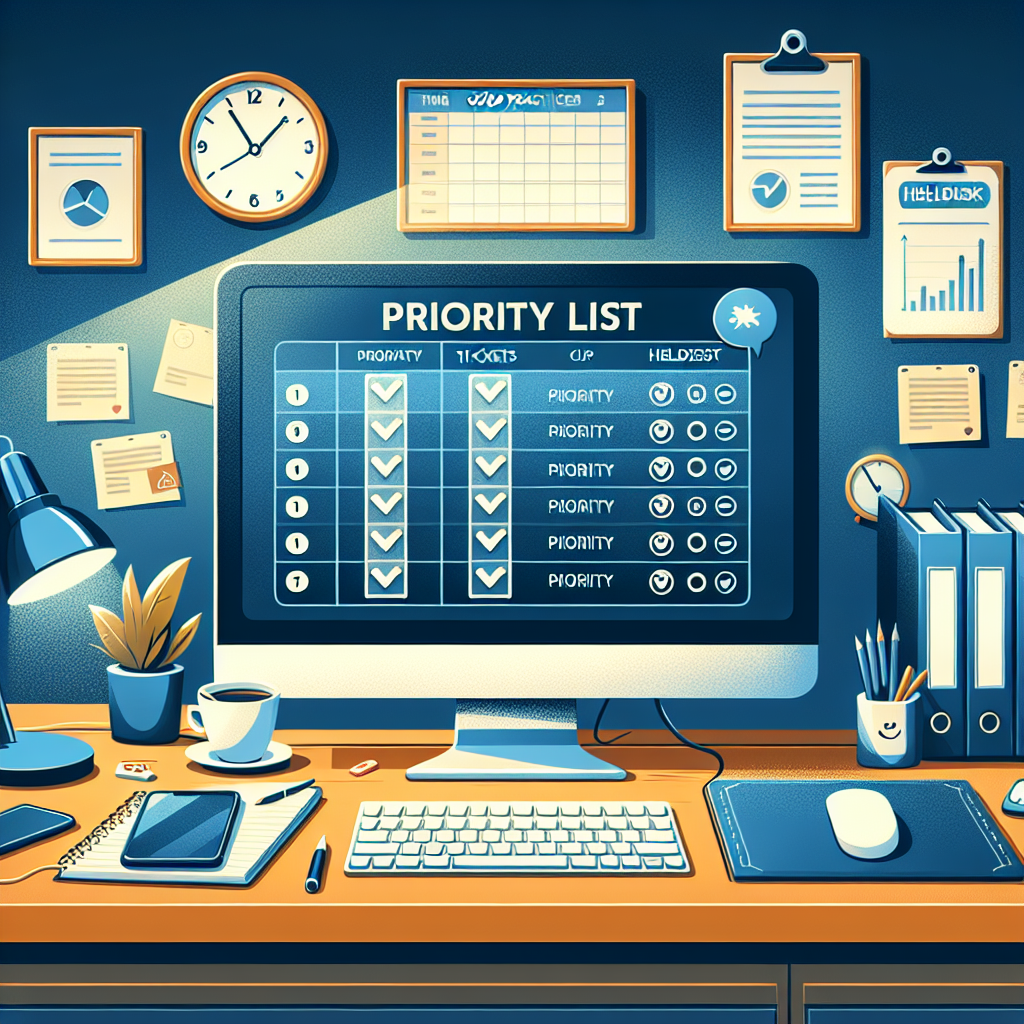
Best Practices for Managing and Prioritizing Help Desk Tickets
Managing and prioritizing help desk tickets is a crucial aspect of ensuring optimal customer service and operational efficiency. With the increasing volume of requests and inquiries coming in through various channels, it is essential for help desk teams to have a structured approach in handling and prioritizing tickets. Here are some best practices to consider when managing and prioritizing help desk tickets:1. Establish Clear Ticket Categories: One of the first steps in effectively managing help desk tickets is to establish clear and specific ticket categories. This will help in organizing and routing tickets to the appropriate team members based on their expertise and availability. Common categories may include technical issues, account inquiries, software bugs, and more.
2. Implement a Ticketing System: Utilizing a ticketing system is essential for tracking and managing help desk tickets efficiently. These systems allow for tickets to be easily categorized, assigned, and prioritized based on various factors such as urgency, complexity, and impact on business operations. Additionally, ticketing systems provide a centralized platform for communication and collaboration among team members.
3. Set Clear Prioritization Guidelines: Establishing clear prioritization guidelines is crucial for ensuring that urgent and critical issues are addressed in a timely manner. Consider factors such as the impact on customers or business operations, the level of urgency, and the complexity of the issue when determining the priority level of tickets.
4. Assign Tickets to the Right Team Members: Assigning tickets to team members with the appropriate skills and expertise is key to resolving issues efficiently. Consider creating specialized teams or assigning specific team members to handle tickets based on their areas of expertise. This will help in ensuring that tickets are resolved quickly and effectively.
5. Monitor Ticket Status and Progress: Regularly monitoring ticket status and progress is essential for tracking the resolution process and identifying any bottlenecks or delays. Utilize reporting and analytics tools provided by your ticketing system to track key metrics such as ticket resolution time, response time, and customer satisfaction ratings.
6. Communicate Proactively with Customers: Keeping customers informed about the status of their tickets and providing regular updates on progress is crucial for maintaining customer satisfaction. Be proactive in communicating with customers and set realistic expectations regarding resolution timelines. This will help in managing customer expectations and building trust.
7. Continuously Improve Processes: Regularly review and assess your help desk ticket management processes to identify areas for improvement. Solicit feedback from team members and customers to gather insights on how to streamline workflows, optimize resources, and enhance the overall customer experience.
In conclusion, managing and prioritizing help desk tickets requires a structured approach that involves clear ticket categorization, effective communication, and continuous improvement. By implementing these best practices, help desk teams can ensure timely and efficient resolution of customer issues, ultimately leading to improved customer satisfaction and operational efficiency.
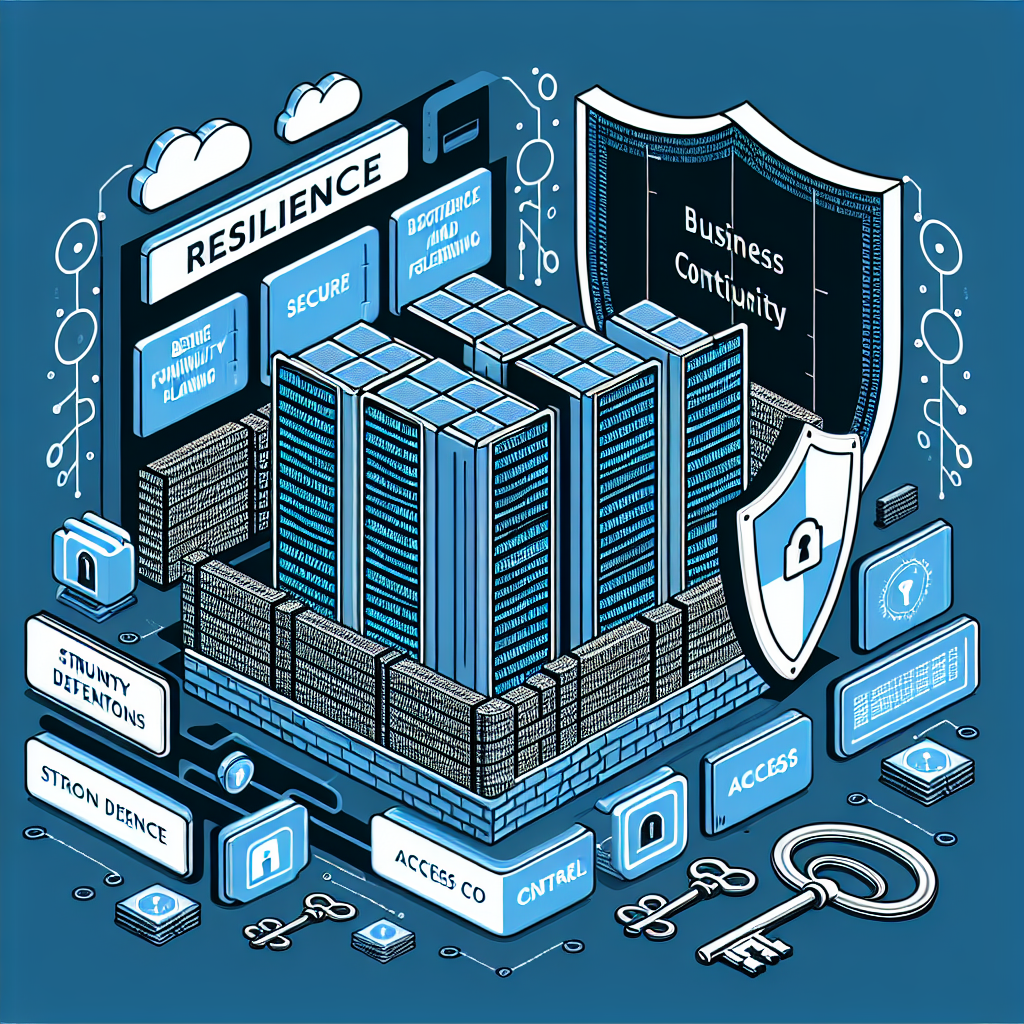
The key to resilience: How data centers are prioritizing business continuity planning
In today’s fast-paced and ever-changing business landscape, resilience has become a key factor in ensuring the success and sustainability of an organization. Resilience refers to the ability of a business to withstand and recover from disruptions, whether they be from natural disasters, cyber attacks, or other unforeseen events.One industry that has been particularly focused on resilience is the data center industry. Data centers house the critical IT infrastructure that organizations rely on to store and manage their data, applications, and services. As such, any disruption to a data center can have far-reaching impacts on the operations and reputation of a business.
To ensure business continuity in the face of potential disruptions, data centers have been prioritizing robust business continuity planning. This involves implementing strategies and processes to minimize the impact of disruptions and ensure that operations can quickly resume in the event of an incident.
One key aspect of business continuity planning for data centers is redundancy. Redundancy involves having backup systems and resources in place to ensure that operations can continue even if one component fails. This may include redundant power supplies, cooling systems, and network connections, as well as backup data storage and disaster recovery solutions.
Another important component of business continuity planning for data centers is risk assessment and mitigation. Data centers must identify potential risks and vulnerabilities, such as power outages, natural disasters, or cyber attacks, and put measures in place to mitigate these risks. This may involve implementing security measures, conducting regular maintenance and testing of systems, and having a comprehensive incident response plan in place.
Additionally, data centers are increasingly leveraging technology to enhance their resilience. This includes the use of artificial intelligence and machine learning algorithms to predict and prevent potential disruptions, as well as automation tools to quickly respond to incidents and minimize downtime.
Overall, the key to resilience for data centers lies in proactive planning, redundancy, risk mitigation, and leveraging technology to enhance operations. By prioritizing business continuity planning, data centers can ensure that they are prepared to withstand and recover from disruptions, keeping their operations running smoothly and their clients satisfied.
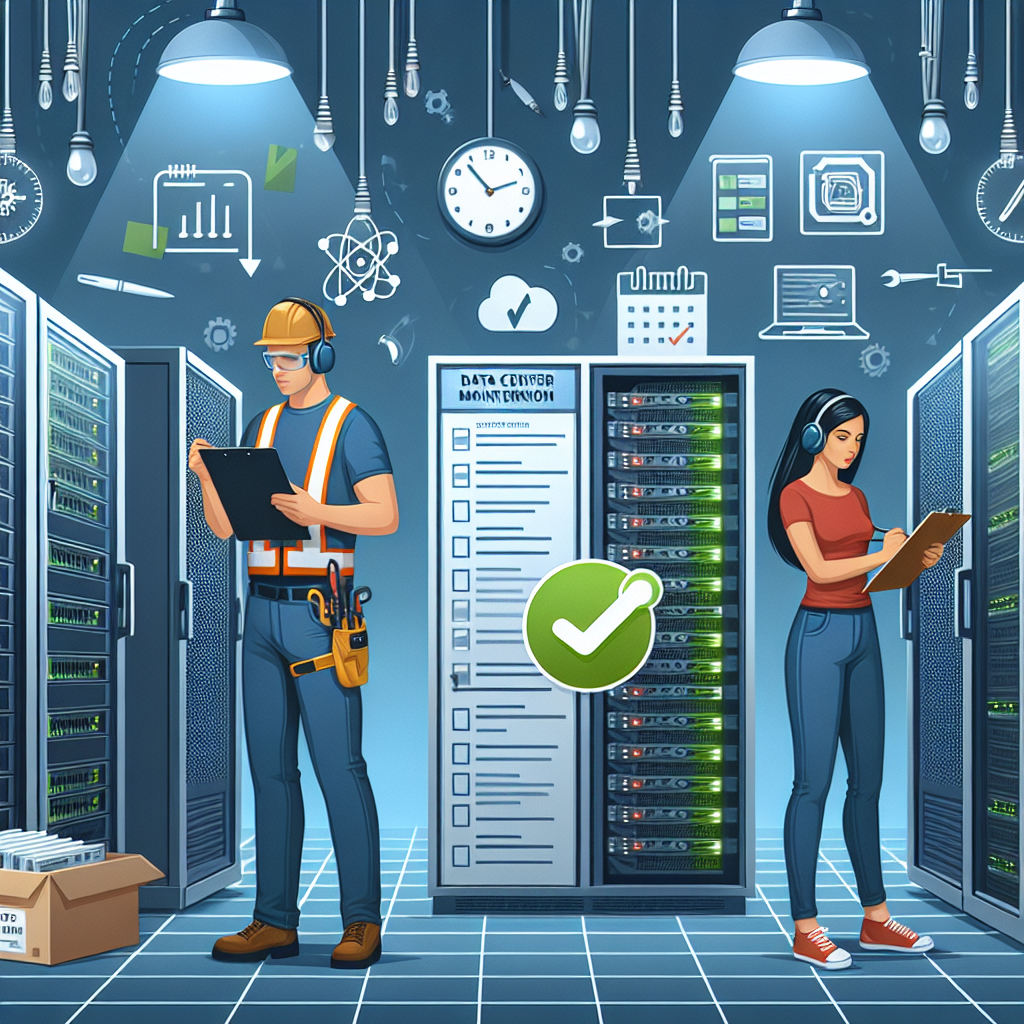
Top Tips for Scheduling and Prioritizing Data Center Preventative Maintenance Tasks
Data centers are the backbone of many organizations, housing critical IT infrastructure that keeps businesses running smoothly. Preventative maintenance is crucial to ensuring the reliability and efficiency of a data center. By scheduling and prioritizing maintenance tasks effectively, data center managers can minimize downtime, reduce the risk of equipment failure, and extend the lifespan of their hardware. Here are some top tips for scheduling and prioritizing preventative maintenance tasks in a data center:1. Create a maintenance schedule: The first step in effectively managing preventative maintenance tasks is to create a detailed schedule. This schedule should outline all the necessary maintenance tasks, such as equipment inspections, cleaning, and firmware updates, and specify when each task should be performed. By having a clear schedule in place, data center managers can ensure that all maintenance tasks are completed in a timely manner.
2. Prioritize critical equipment: Not all equipment in a data center is equally important. Some equipment, such as servers and UPS systems, are critical to the operation of the data center and should be given top priority in terms of maintenance. Data center managers should identify the most critical equipment and prioritize their maintenance tasks accordingly.
3. Use monitoring tools: Monitoring tools can help data center managers track the performance of their equipment in real-time and identify potential issues before they escalate into major problems. By using monitoring tools, data center managers can proactively schedule maintenance tasks based on the performance data of their equipment.
4. Consider vendor recommendations: Equipment manufacturers often provide recommendations for preventative maintenance tasks and schedules. Data center managers should follow these recommendations to ensure that their equipment is properly maintained and to avoid voiding warranties.
5. Plan for downtime: Some maintenance tasks may require downtime, such as replacing a faulty component or performing a system upgrade. Data center managers should plan for downtime in advance and schedule maintenance tasks during off-peak hours to minimize the impact on operations.
6. Document maintenance activities: It is important to keep detailed records of all maintenance activities performed in the data center. This documentation can help data center managers track the history of their equipment, identify recurring issues, and demonstrate compliance with maintenance best practices.
By following these top tips for scheduling and prioritizing preventative maintenance tasks, data center managers can ensure the reliability and efficiency of their data center infrastructure. Preventative maintenance is a proactive approach to managing data center operations, and investing time and resources in maintenance can pay off in the form of increased uptime, reduced costs, and improved performance.
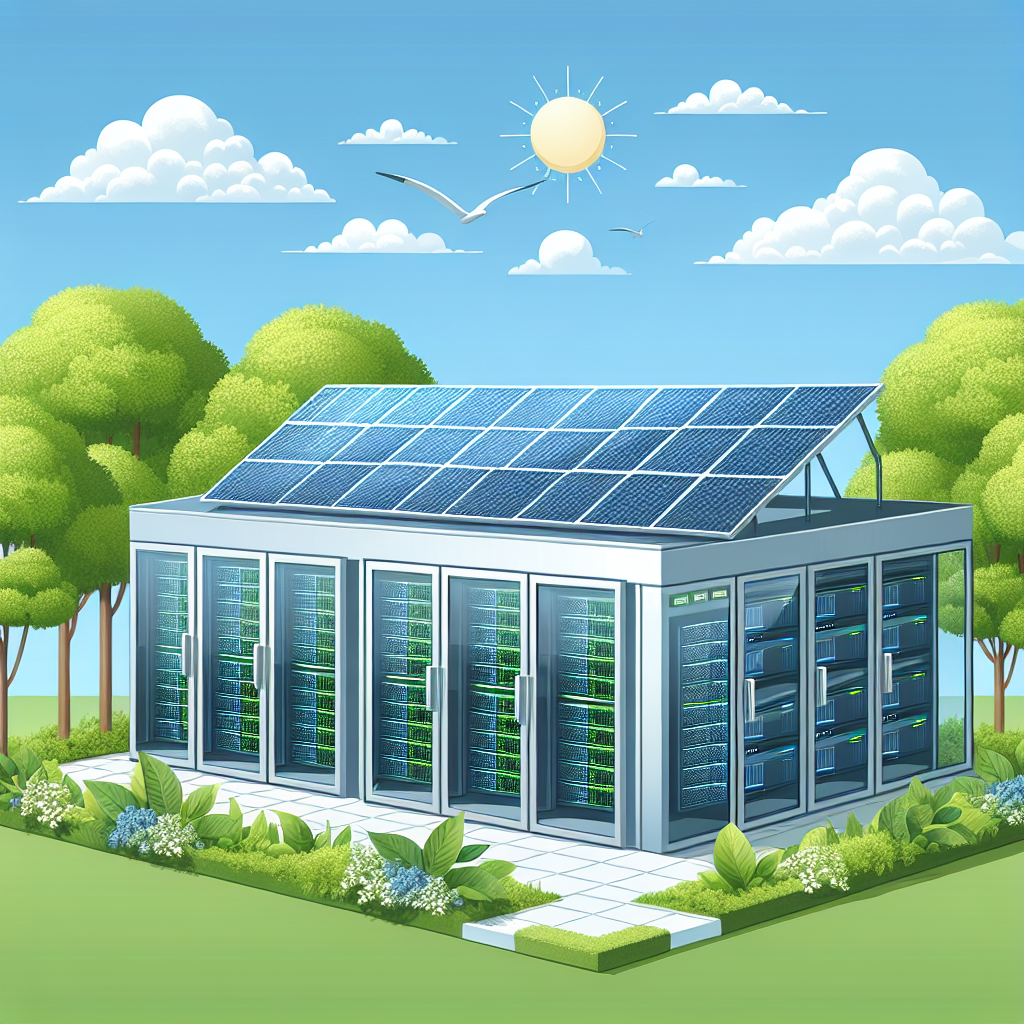
The Green Revolution: How Data Centers are Prioritizing Sustainability
The Green Revolution: How Data Centers are Prioritizing SustainabilityIn recent years, the topic of sustainability has become increasingly important, as the effects of climate change become more apparent. One industry that has been particularly scrutinized for its environmental impact is the data center industry. Data centers are essential for storing and processing the vast amounts of data that power our digital world, but they also consume a significant amount of energy and produce a large amount of carbon emissions.
However, in recent years, data centers have been making significant strides in prioritizing sustainability and reducing their environmental impact. Many data center providers are now investing in renewable energy sources, such as solar and wind power, to power their operations. By using clean energy sources, data centers can significantly reduce their carbon footprint and decrease their reliance on fossil fuels.
In addition to investing in renewable energy, data centers are also implementing energy-efficient technologies to reduce their overall energy consumption. This includes using more efficient cooling systems, optimizing server utilization, and implementing energy management software to monitor and control energy usage. By improving energy efficiency, data centers can reduce their energy costs and minimize their environmental impact.
Another key aspect of sustainability in data centers is water usage. Data centers require a significant amount of water for cooling purposes, which can put a strain on local water resources. To address this issue, many data centers are implementing water recycling and reuse systems, as well as investing in more water-efficient cooling technologies. By reducing water usage, data centers can lessen their impact on local water supplies and contribute to water conservation efforts.
Furthermore, data centers are also focusing on waste management and recycling initiatives to minimize their waste production and reduce their environmental footprint. This includes recycling electronic waste, such as old servers and equipment, as well as implementing sustainable practices for managing and disposing of waste materials. By prioritizing waste management, data centers can reduce their environmental impact and contribute to a more sustainable future.
Overall, the green revolution in data centers is a positive development that demonstrates the industry’s commitment to sustainability and environmental responsibility. By investing in renewable energy, improving energy efficiency, reducing water usage, and implementing waste management initiatives, data centers are making significant progress in reducing their environmental impact and contributing to a more sustainable future. As data centers continue to prioritize sustainability, they are setting a positive example for other industries to follow and demonstrating that it is possible to balance technological innovation with environmental stewardship.
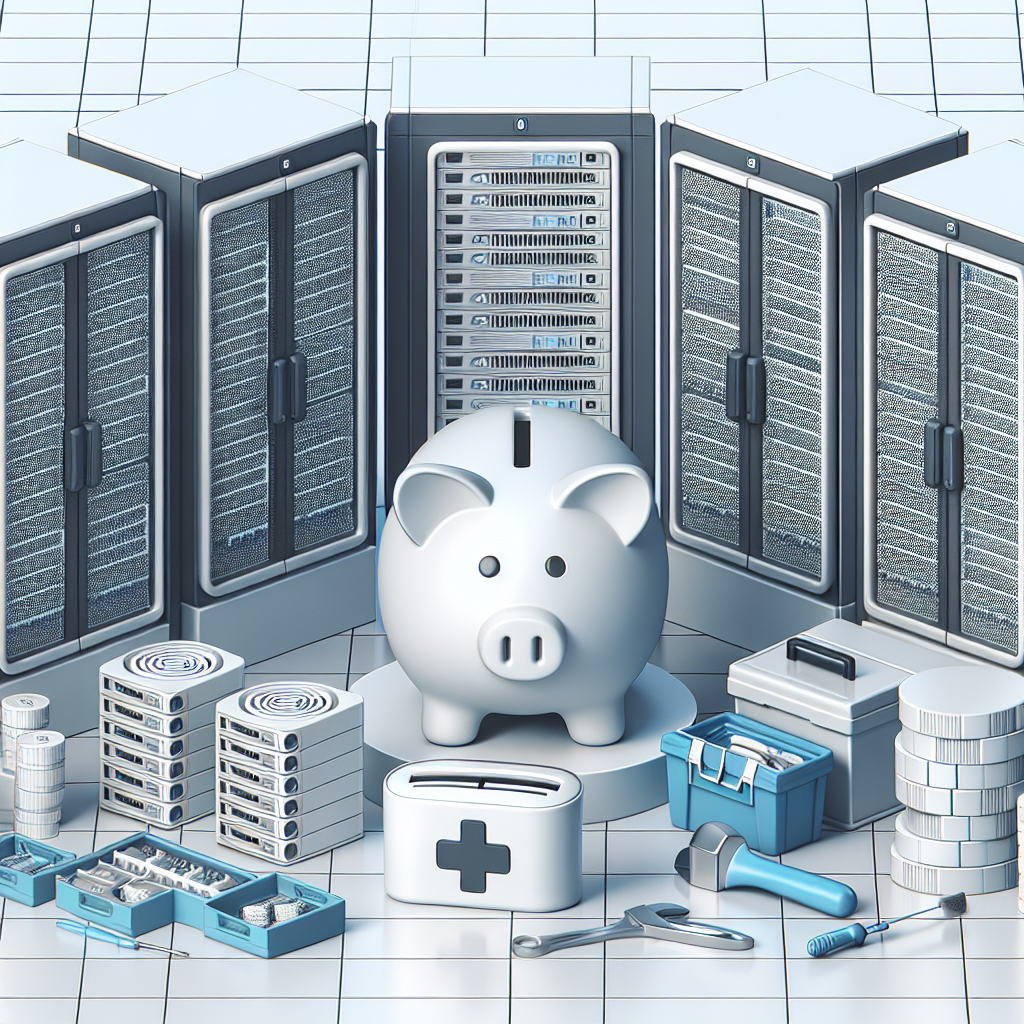
The Cost-Saving Benefits of Prioritizing Data Center Preventative Maintenance
In today’s technology-driven world, data centers play a crucial role in storing and managing large amounts of data for businesses of all sizes. With the increasing reliance on data centers, it is essential for companies to prioritize preventative maintenance to ensure the smooth operation and longevity of their data center infrastructure.Preventative maintenance refers to the proactive measures taken to prevent equipment failure and reduce downtime in data centers. By regularly inspecting, cleaning, and servicing equipment, companies can avoid costly repairs and unexpected downtime that can disrupt business operations.
One of the key benefits of prioritizing preventative maintenance in data centers is cost savings. While investing in maintenance may seem like an added expense, it can actually save companies money in the long run. By regularly maintaining equipment, companies can identify and address potential issues before they escalate into costly repairs or replacements.
Regular maintenance can also extend the lifespan of data center equipment, reducing the need for frequent replacements and saving companies money on new equipment purchases. Additionally, preventative maintenance can improve the efficiency of equipment, leading to lower energy costs and increased overall savings for businesses.
Another cost-saving benefit of prioritizing preventative maintenance is the reduction of downtime. Downtime can be incredibly costly for businesses, causing lost productivity, revenue, and customer trust. By regularly maintaining equipment and addressing potential issues early on, companies can minimize the risk of unexpected downtime and keep their data center running smoothly.
In addition to cost savings, prioritizing preventative maintenance can also improve the overall reliability and performance of data center equipment. Regular maintenance can help identify and address issues that may be impacting the performance of equipment, leading to a more efficient and reliable data center operation.
Overall, prioritizing preventative maintenance in data centers can lead to significant cost savings for businesses. By investing in regular maintenance, companies can avoid costly repairs, extend the lifespan of equipment, reduce downtime, and improve overall reliability and performance. In today’s competitive business landscape, maintaining a well-functioning data center is essential for success, and preventative maintenance is a key component in achieving that goal.
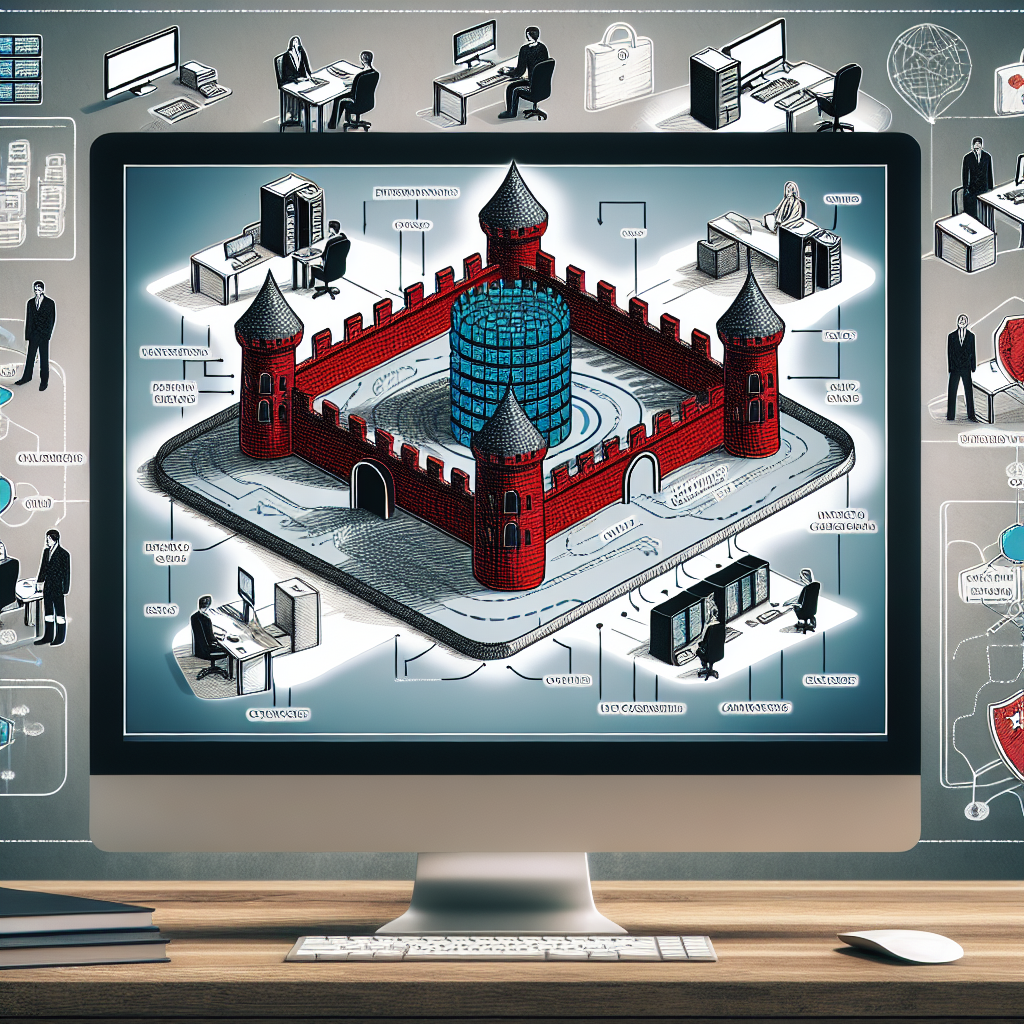
The Importance of Prioritizing Cisco Network Security in Businesses
In today’s digital age, businesses rely heavily on their networks to communicate, collaborate, and conduct transactions. However, with the increasing number of cyber threats and attacks, it has become imperative for businesses to prioritize network security, especially when it comes to Cisco networks.Cisco is one of the leading providers of networking equipment and solutions, used by millions of businesses around the world. While Cisco networks offer numerous benefits, they also present security risks that need to be addressed proactively.
One of the main reasons why prioritizing Cisco network security is crucial for businesses is to protect sensitive data. In today’s data-driven economy, businesses collect and store a vast amount of sensitive information, such as customer details, financial data, and intellectual property. A breach in network security can result in this information falling into the wrong hands, leading to serious consequences such as financial loss, reputational damage, and legal liabilities.
Moreover, network security is essential for ensuring business continuity. A cyber attack can disrupt business operations, causing downtime, loss of revenue, and damage to customer relationships. By prioritizing Cisco network security, businesses can minimize the risk of such disruptions and ensure that their operations run smoothly and efficiently.
Additionally, network security is crucial for maintaining regulatory compliance. Many industries, such as healthcare, finance, and government, have strict regulations governing the protection of sensitive data. Failure to comply with these regulations can result in hefty fines and penalties. By implementing robust security measures for Cisco networks, businesses can demonstrate their commitment to data protection and compliance.
Furthermore, prioritizing Cisco network security can help businesses build trust with customers and partners. In today’s competitive marketplace, consumers are increasingly concerned about the security of their data. By investing in network security, businesses can reassure their stakeholders that their information is safe and secure, leading to increased trust and loyalty.
In conclusion, the importance of prioritizing Cisco network security in businesses cannot be overstated. By safeguarding sensitive data, ensuring business continuity, maintaining regulatory compliance, and building trust with stakeholders, businesses can protect their assets and reputation from cyber threats. Investing in network security is not only a smart business decision but also a critical step towards ensuring long-term success and sustainability.
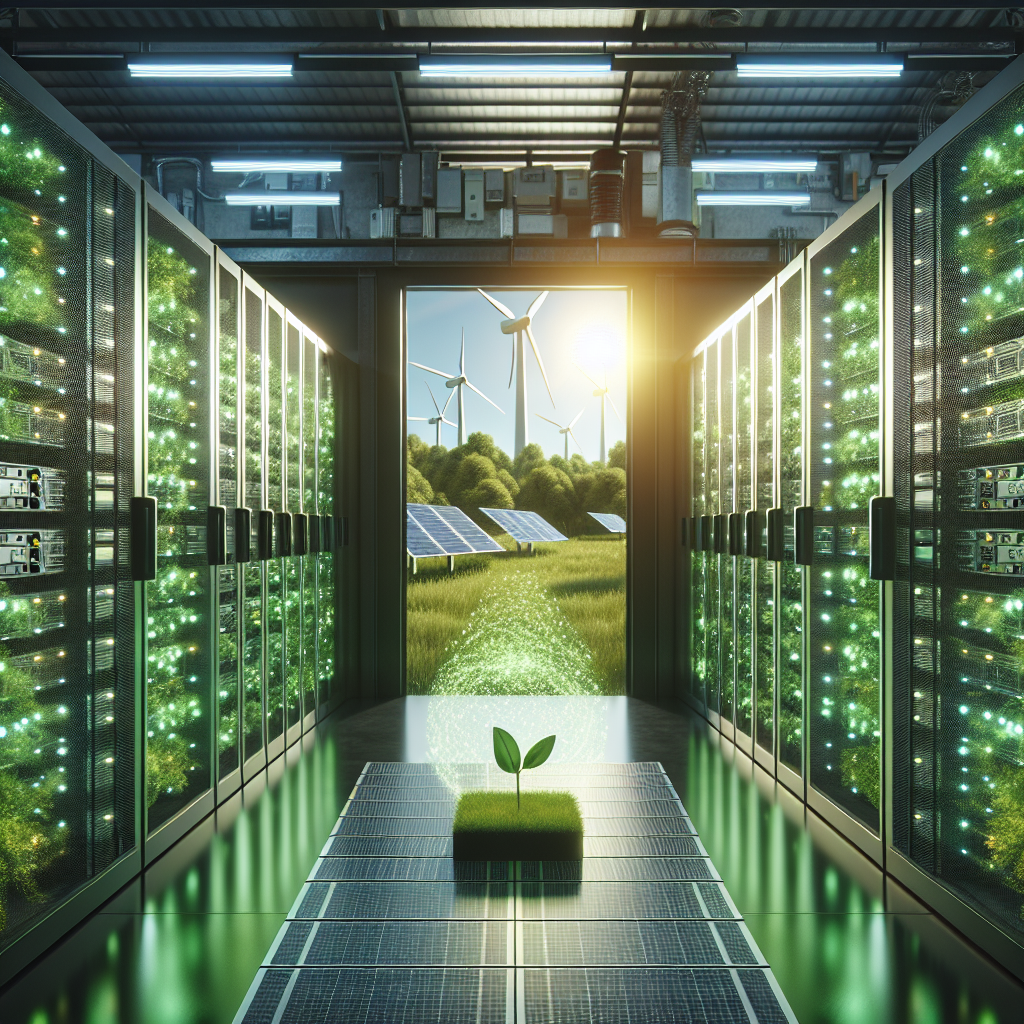
The Green Data Center: How Companies are Prioritizing Energy Efficiency
In today’s digital age, the demand for data storage and processing is higher than ever before. With the increasing use of cloud computing, big data analytics, and the Internet of Things, data centers have become a crucial part of our modern infrastructure. However, the environmental impact of data centers cannot be ignored.Data centers consume a significant amount of energy, and as a result, they contribute to greenhouse gas emissions and climate change. In fact, data centers are estimated to be responsible for around 2% of global carbon emissions, which is roughly equivalent to the emissions of the airline industry.
In response to this growing concern, many companies are now prioritizing energy efficiency in their data centers. One of the key strategies being implemented is the creation of green data centers. These data centers are designed and operated with a focus on minimizing energy consumption and reducing their environmental footprint.
There are several ways in which companies are achieving energy efficiency in their data centers. One common approach is to utilize energy-efficient hardware, such as servers, storage devices, and cooling systems. By using equipment that is specifically designed to consume less energy, companies can significantly reduce their energy consumption and lower their operating costs.
Another strategy that companies are adopting is the use of renewable energy sources to power their data centers. This includes solar, wind, and hydroelectric power, which are all environmentally friendly alternatives to traditional fossil fuels. By sourcing their energy from renewable sources, companies can reduce their carbon footprint and demonstrate their commitment to sustainability.
In addition to hardware and energy sources, companies are also implementing energy management software and monitoring systems to optimize their data center operations. By closely monitoring energy usage and identifying areas for improvement, companies can make informed decisions on how to further reduce their energy consumption.
Furthermore, companies are exploring innovative cooling technologies, such as liquid cooling and free cooling, to improve the energy efficiency of their data centers. By using these technologies, companies can reduce the amount of energy required to cool their servers and maintain optimal operating temperatures.
Overall, the shift towards green data centers is a positive development in the tech industry. By prioritizing energy efficiency, companies can not only reduce their environmental impact but also improve their bottom line through cost savings. As the demand for data continues to grow, it is crucial for companies to embrace sustainable practices in their data center operations and lead the way towards a greener future.
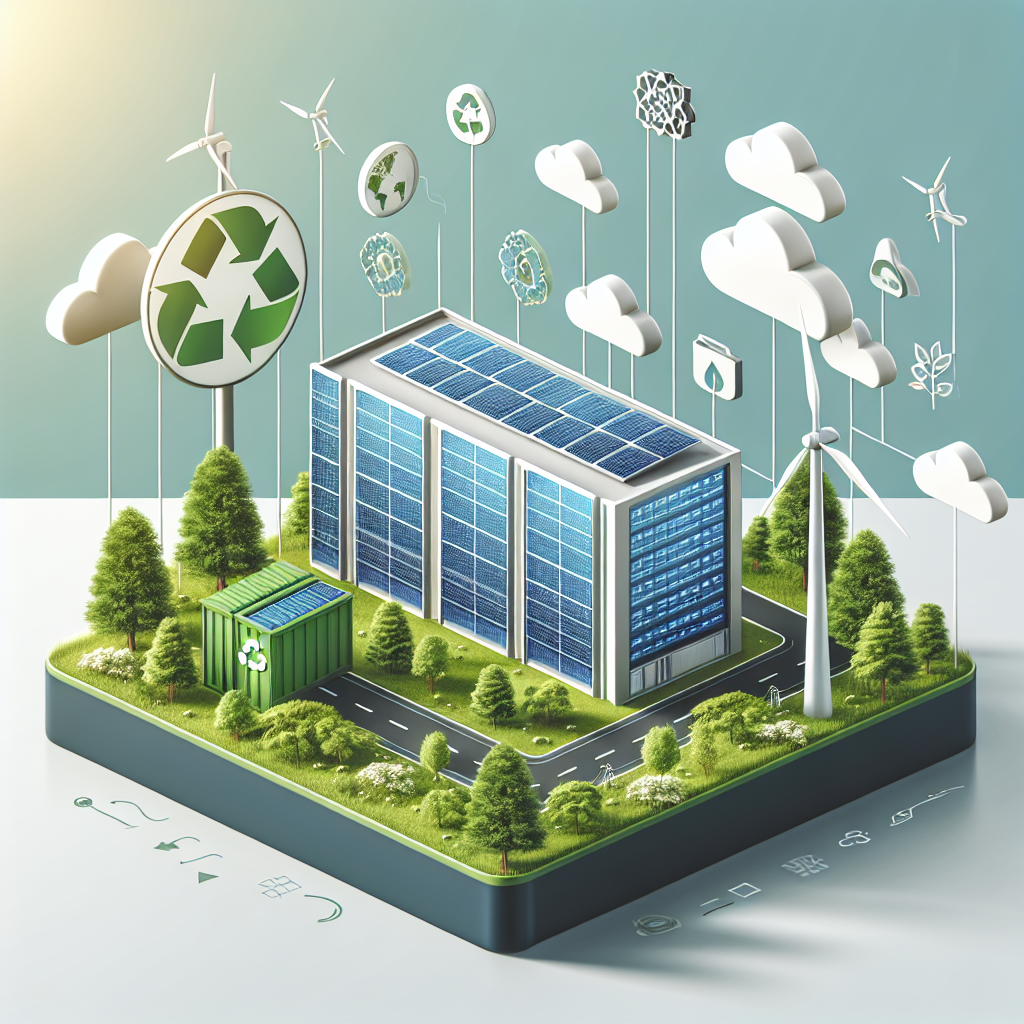
The Sustainable Data Center: How Companies are Prioritizing Environmental Responsibility
In recent years, there has been a growing trend towards environmental responsibility and sustainability in the business world. Companies are increasingly recognizing the importance of reducing their carbon footprint and minimizing their impact on the environment. One area where this commitment to sustainability is particularly evident is in the data center industry.Data centers are essential to the operation of modern businesses, housing the servers and networking equipment that power everything from websites to cloud services. However, data centers are also notorious for their high energy consumption and environmental impact. According to a report by the Natural Resources Defense Council, data centers in the United States alone consume about 2% of the country’s total electricity usage.
Recognizing the need to address this issue, many companies are now prioritizing sustainability in their data center operations. This includes implementing energy-efficient technologies, using renewable energy sources, and reducing waste and carbon emissions. By doing so, companies not only reduce their environmental impact but also save on energy costs and improve their overall efficiency.
One way companies are making their data centers more sustainable is by investing in energy-efficient infrastructure. This includes using more efficient servers, cooling systems, and power distribution units that consume less energy and produce fewer emissions. Companies are also exploring innovative cooling technologies, such as liquid cooling and free-air cooling, which can significantly reduce energy usage and improve the overall efficiency of the data center.
In addition to energy-efficient technologies, companies are also looking to renewable energy sources to power their data centers. Many companies are investing in solar panels, wind turbines, and other renewable energy sources to offset their electricity consumption and reduce their reliance on fossil fuels. Some companies are even partnering with utility providers to purchase renewable energy credits or enter into power purchase agreements to ensure that their data centers are powered by clean, renewable energy.
Another key focus for companies looking to make their data centers more sustainable is reducing waste and carbon emissions. This includes implementing recycling programs for e-waste, using energy-efficient lighting and equipment, and optimizing server utilization to reduce energy waste. Companies are also exploring ways to capture and reuse waste heat generated by their data centers, such as using it to heat office buildings or nearby homes.
Overall, the shift towards sustainability in the data center industry is a positive development for both businesses and the environment. By prioritizing environmental responsibility, companies can reduce their carbon footprint, lower their energy costs, and improve their overall efficiency. As the demand for data centers continues to grow, it is crucial that companies prioritize sustainability in their operations to ensure a more sustainable future for all.
